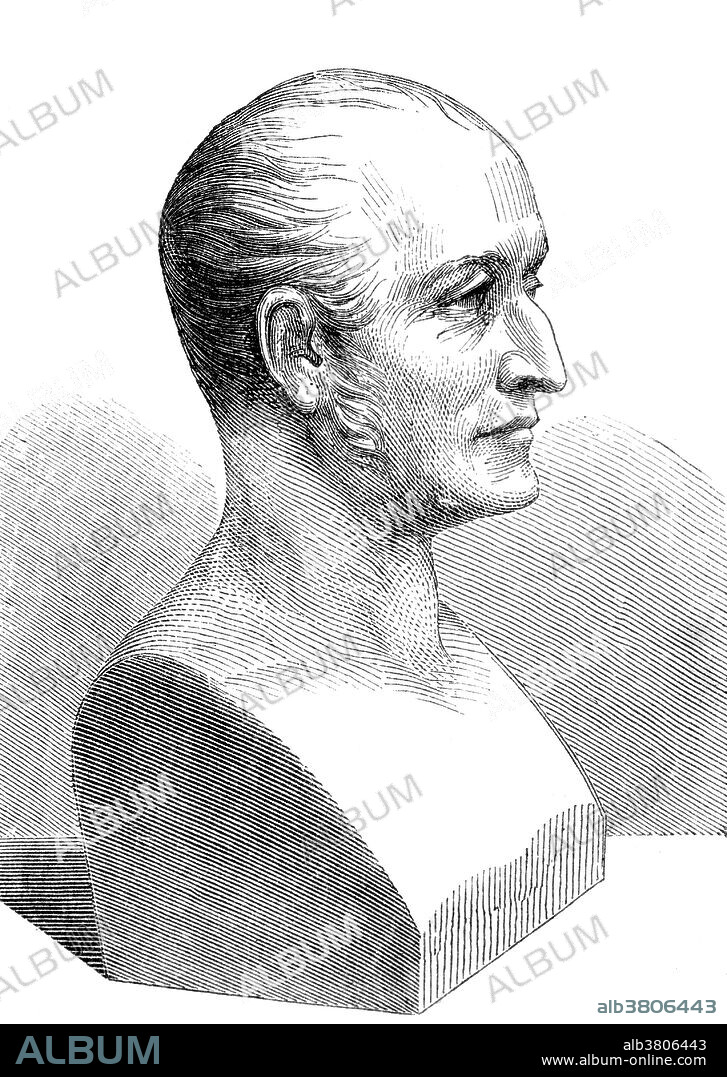alb3806443
Joseph Nicephore Niepce, French inventor

|
Add to another lightbox |
|
Add to another lightbox |



Buy this image.
Select the use:

Title:
Joseph Nicephore Niepce, French inventor
Caption:
Joseph Nicephore Niepce (March 7, 1765 - July 5, 1833) was a French inventor, credited as the inventor of photography. In 1822 Niepce took what is believed to be the world's first photogravure etching, an engraving of Pope Pius VII, but the original was later destroyed when he attempted to duplicate it. In 1825 he developed heliography, a technique he used to create the world's oldest surviving product of a photographic process: a print made from a photoengraved printing plate. In 1826-27, he used a primitive camera to produce the oldest surviving photograph of a real-world scene. In 1829 he began collaborating on improved photographic processes with Louis Daguerre, and together they developed the physautotype, a process that used lavender oil. Among his other inventions was the Pyreolophore, the world's first internal combustion engine, which he conceived, created, and developed with his older brother Claude. Nicephore squandered much of the family
Credit:
Album / Science Source
Releases:
Model: No - Property: No
Rights questions?
Rights questions?
Image size:
3089 x 4350 px | 38.4 MB
Print size:
26.2 x 36.8 cm | 10.3 x 14.5 in (300 dpi)
Keywords:
1765 • 1833 • 18TH CENTURY • 18TH CENTURY, THE • 18TH CENTURY. • 18TH • 19 CENTURY • 19TH CENTURY • 19TH CENTURY. • 19TH • 19TH-CENTURY • ART • ARTWORK • CELEBRITIES • CELEBRITY • CENTURY • COMBUSTION • DRAWING • ENGINE • ETCHING • EUROPEA • EUROPEAN • EUROPEANS • FAMOUS PEOPLE • FAMOUS • FIGUIER • FIGURE • FIRST • FRENCH • GRANDES • GREAT • HELIOGRAPHY • HISTORIC • HISTORICAL • HISTORY • ILLUSTRATION • ILLUSTRATIONS • IMPORTANT • INTERNAL • INVENTIONS • INVENTOR (MALE) • INVENTOR • JOSEPH • LÈS • LOUIS • MALE • MAN • MEN • MOMENT IN TIME • NICÉPHORE • NIÉPCE • NINETEENTH CENTURY • NOTABLE • OF • PEOPLE • PERSON • PERSONALITIES • PERSONALITY • PHOTO • PHOTOGRAPH • PHOTOGRAPHIC • PHOTOGRAPHIE • PHOTOGRAPHY • PHOTOGRAVURE • PIONEER • PORTRAIT • POTRAIT • PROCESSES • PYREOLOPHORE • SCIENCE • TECHNOLOGICAL • TECHNOLOGY • WELL-KNOWN • XIX CENTURY • XVIII CENTURY
 Pinterest
Pinterest Twitter
Twitter Facebook
Facebook Copy link
Copy link Email
Email
